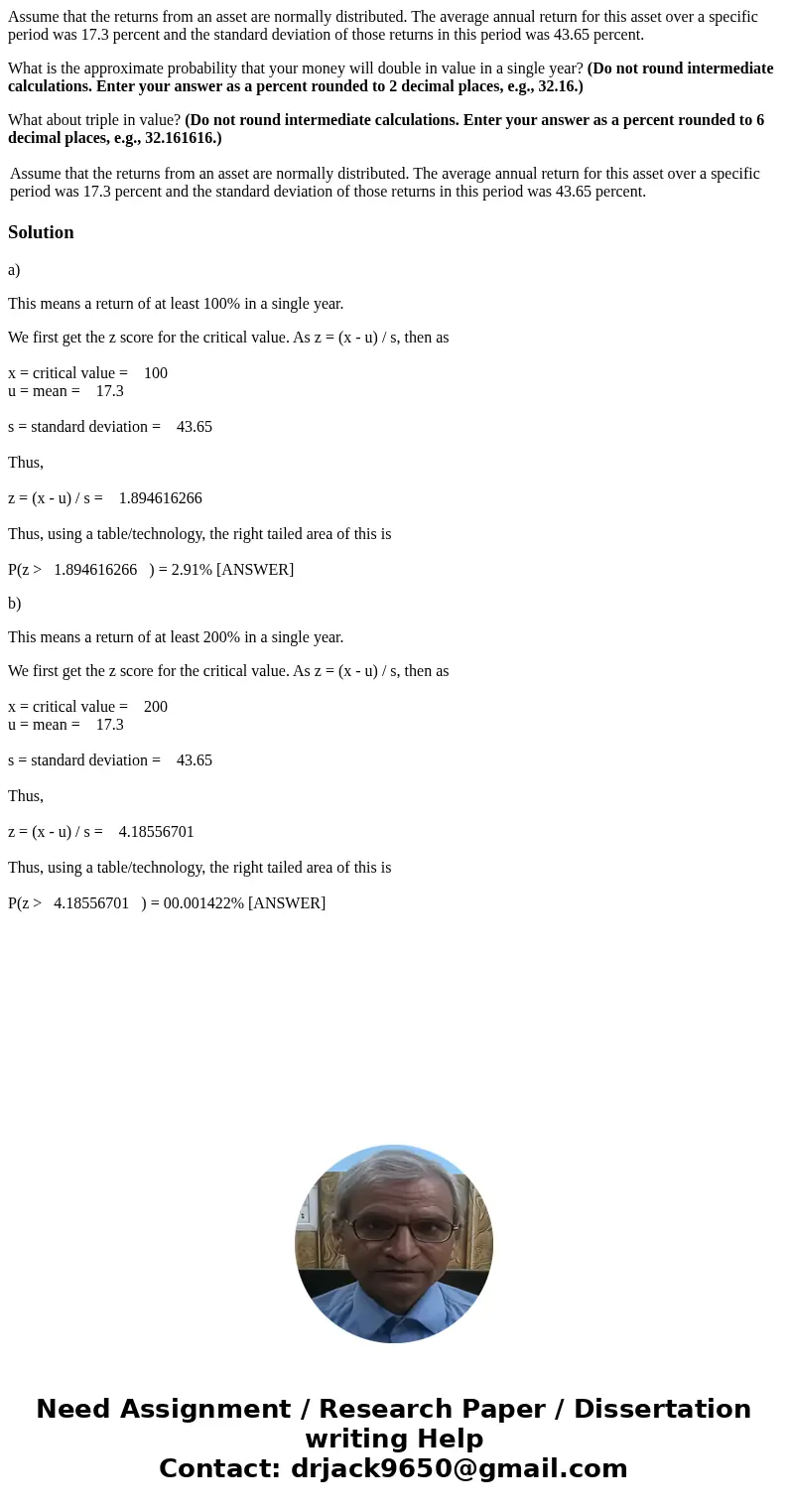Assume that the returns from an asset are normally distribut
Assume that the returns from an asset are normally distributed. The average annual return for this asset over a specific period was 17.3 percent and the standard deviation of those returns in this period was 43.65 percent.
What is the approximate probability that your money will double in value in a single year? (Do not round intermediate calculations. Enter your answer as a percent rounded to 2 decimal places, e.g., 32.16.)
What about triple in value? (Do not round intermediate calculations. Enter your answer as a percent rounded to 6 decimal places, e.g., 32.161616.)
| Assume that the returns from an asset are normally distributed. The average annual return for this asset over a specific period was 17.3 percent and the standard deviation of those returns in this period was 43.65 percent. |
Solution
a)
This means a return of at least 100% in a single year.
We first get the z score for the critical value. As z = (x - u) / s, then as
x = critical value = 100
u = mean = 17.3
s = standard deviation = 43.65
Thus,
z = (x - u) / s = 1.894616266
Thus, using a table/technology, the right tailed area of this is
P(z > 1.894616266 ) = 2.91% [ANSWER]
b)
This means a return of at least 200% in a single year.
We first get the z score for the critical value. As z = (x - u) / s, then as
x = critical value = 200
u = mean = 17.3
s = standard deviation = 43.65
Thus,
z = (x - u) / s = 4.18556701
Thus, using a table/technology, the right tailed area of this is
P(z > 4.18556701 ) = 00.001422% [ANSWER]

 Homework Sourse
Homework Sourse